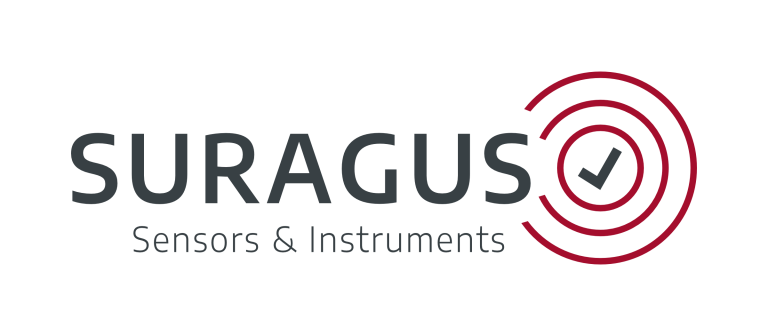Everything About Residual Moisture
Content Overview
Table of Contents
Introduction
Residual moisture characterization is crucial for device and cell performance in electro-chemical applications such as batteries, fuel cells, organic photovoltaic and many other applications. Inks, pastes and slurries are usually water or solvent based substances carrying various compounds of particles and molecules. Their material composition is varying along the deposition and drying processes. The parameter moisture content is controlled by applying oven or furnace-based heat processes such as drying, sintering or tempering. The residual moisture or water or solvent content is measured and controlled along the manufacturing processes. If the residual moisture content is too low, functional layers are getting porous and will peel off from the substrate. If water content is too high, the applied layer formation cannot be maintained, especially during handling and potentially winding. Finally, the optimum in residual moisture needs to be identified, for post-processing, cell assembling and for achieving best electrochemical performance. This optimization is achieved by residual moisture monitoring systems.
Wet Coating Composition
Wet coatings may comprise of various components with a set of characteristics affecting the response to high frequency electromagnetic magnetic fields. The three key characteristics are:
- Electrical conductive elements (graphite / carbon, metals e.g. Platin)
- Dielectric elements (water, solvents, polymers
- (Ferro)magnetic permeable elements (Co, Fe, Ni)
High Frequency Testing
The composition affects the response of wet films and coatings to electric and magnetic fields. SURAGUS uses a special high frequency eddy current technology in order to characterize wet coatings using its resistivity, permittivity or permeability to derive film properties such as residual moisture or wet coating thickness. Depending on its fractions of water, solvent, catalysts and matrix material such as carbon, high frequency eddy current technology is able to provide a repeatably and reliable signal for interpreting residual moisture. Benefits of this testing method include
- Contact free and real-time
- High speed measurement for industry productivity
- High repeatability and accuracy
Applications
Wet coatings for electro-chemical devices, such as electrode layers, induce a certain electromagnetic field by applying an eddy current forces. Applications include
- Gas diffusion layer
- Gas diffusion electrode
- Catalyst coated membrane
- Catalyst characterization
- Decal transfer
- Electrode deposition
Users apply moisture characterization for several reasons including:
- Process control for keeping moisture in material or process specification
- Detect quickly wet spots, wet streaks, and wet edges
- Prevent coatings peeling off the substrate
- Energy effective utilization of drying infrastructure
- Prevent overdrying and optimizing energy costs
- Prevent undesired shrinkage losses
Processes include
- Slot die coating
- Spraying coating
- Curtain coating
Substrates include
- Non-woven
- Plastic foils
- Paper
- Moisture absorbing powders
- Fibers
- Naturals and other non-conductive products
Definitions and Units
Traditionally residual moisture of a wet deposited film or slurry can be determined by using weighing scales. The unit will be derived by the ratio between the dried and the wet layer in percent (%).
- Chemical industry, e.g. for characterization of particle and powder materials
- Metallurgy, e.g. non-destructive quality control
- Microwave absorbing materials, e.g. by increasing magnetic permeability by modifying the intrinsic material parameters
- Microwave and RF electronics
- III-V Semiconductor
- Photonic devices, e.g. waveguide optical modulator
Methods
Thermo-gravimetric Analysis
Introduction
Thermo-gravimetric analysis (TGA) is a thermal method for determining the mass of a sample over time within a temperature cycle. The energy source could be a resistivity heating element or a halogen infrared lamp.
Limitation
- Takes up to several hours
- Allows batch wise off-line characterization only
Karl Fischer Titration
Introduction
Karl Fischer titration (KF) is a coulometric or volumetric method for determining water content in inks, pastes and slurries. By oxidation of SiO2 and I2 the amount of H2O can be determined. One molar equivalent of water reacts exactly with a single molar equivalent of iodine. Iodine will be added to the sample as long as it is not excessing water contents. This end point of titration is being determined by potentiometry. In addition to inline-characterization technologies KF method can be used for calibration.
Limitation
- Refers to water-based slurries only
- Method takes up to several minutes
- Allows batch wise off-line characterization only
X-Ray Fluorescence Spectroscopy
Introduction
X-Ray fluorescence spectroscopy emits high-energy gamma rays towards a material. Hence, this material emits a characteristic fluorescent spectrum. Doing so, materials are exposed to short-wavelength x-rays and their atoms get ionized. By ionization one or more electrons will be ejected from its inner orbital. Electrons from a higher orbital will fall into the lower orbital. The energy being released will be seen as a photon. The photon energy is characteristic for this certain atom and material.
Limitation
- Limited to elements with atomic number larger than 4, e.g. starting with Bor
Infrared Technology (IR)
Introduction
Near infrared (NIR) spectroscopy is measuring molecular vibrations in the IR range by measuring overtones and combination tones. The energy absorption on molecular level is quite low. The light between 780 and 2,500 nm interacts with the sample and measures its absorbance and transmittance. Hence, NIR is well established for moisture measurement.
Limitation
- High absorbance in carbon-based materials
Ultrasonic Technology
Introduction
Ultrasonic characterization sends an ultrasonic signal towards a sample, using a transducer probe. The ultrasonic vibration goes through a certain coating until it hits a material with different mechanical properties. Hence, the signal received by the transducer probe unit changes due to this material interface.
Limitation
- Characterization method requires contact mode
